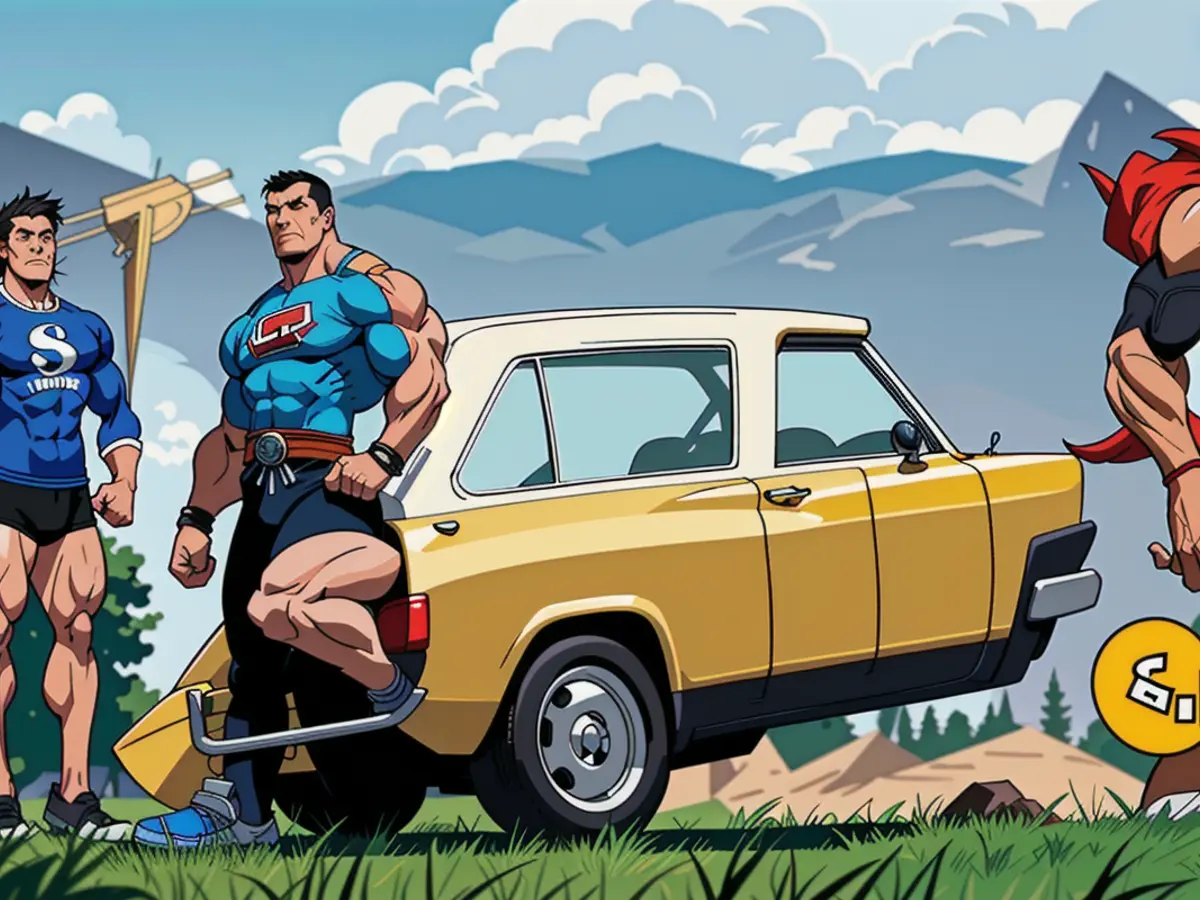Pioneering the Tiny Volvo Roots: The DAF 66 Turned Volvo 66
Volvo Model 66: Tormenting Children, Miniature Elk, and Thor's Symbol
In the mid-70s, Volvo was ready to rock the compact class with a funky Dutchman who could zip around just as fast in reverse as forward. Swedish automakers transformed the diminutive DAF 66 into a Volvo, making it the ancestor of the modern Volvo EX30.

Today, it's all about the slick, fully electric Volvo EX30 sending shockwaves through the mini-SUV segment. But five decades ago, it was a quirky Dutchman who was poised to make history as the smallest Volvo ever. The Volvo 66 stood just 3.90 meters long and 1.50 meters wide, based on the last vehicle model from the Dutch DAF concern. These little clunkers with their Italian Michelotti designs were adored everyday vehicles in Scandinavia, thanks to powering the reliable Kalmar transporters of the post office.

The international reputation for DAF-styled vehicles could not have been worse. Their unique invention, the continuously variable CVT transmission, gave DAF sedans, coupes, and station wagons a reputation for "retirement" and "women's cars" outside of the Netherlands. While automatic transmissions are now a necessity in most city cars, they were considered cool in the 70s, despite DAF models earning the title of the "flying Dutchman" in rallies.
Taking Over DAF Car Division
Volvo CEO Pehr Gyllenhammar refused to be deterred by this. He decided to expand Volvo's portfolio in 1975, took over DAF's car division, and unveiled the Type 66 as the first compact Volvo since the legendary PV544 "Humpback." Within only a year, the Volvo 343, descended from the DAF 77, followed suit, becoming a million-seller after a rocky start. Suddenly, Volvo was in the thick of the competitive Golf segment - with tiny Dutch "made-in-the-Netherlands" vehicles.
Analysts assumed that Sweden’s largest industrial concern had taken on too much with the acquisition of DAF, and Volvo was on the brink of financial ruin. However, the maker of large sedans and station wagons, luxury coupes soon became a successful generalist after some initial hiccups. The Volvo 300 series became a million-seller, allowing Volvo's chief strategist Pehr Gyllenhammar to thwart the politically-motivated merger of Volvo with Saab.
Gyllenhammar built a cult of personality, but Swedes weren't into that-yet his keen investments earned him consideration as the next prime minister. Even his provocatively red-painted Volvo turbo service cars were accepted. After all, the "man with the golden hands" had brokered the deal with the Dutch and made Volvo the national flagship company. Despite plans to merge with Renault in the 90s-the engine supplier for the Volvo 66, 300, and 400-the Volvo shareholders nixed the idea, sending Gyllenhammar's career ambitions packing.
The Infamous Troll Kid Tjorven
Fifty years ago, Gyllenhammar took over the reins of Volvo from his father-in-law Gunnar Engellau, who had already considered engaging with DAF. Although the small Dutch vehicle manufacturer was a staple of Swedish everyday life, supplying reliable technology for the Kalmar transporters of the post office, it couldn't seem to sell its "Troll Kind" (troll kids) in any significant numbers to private consumers-probably because DAF's quality and reputation outside of Scandinavia were poor.
Wild Backward Races
The crazy DAF 66 Marathon Coupé, which was used in racing by Per-Inge Walfridson – "Pi, the Porsche Killer"-failed to improve the reputation of these small cars. But the outrageous 'Achteruitrijden' (backward races) proved to be a hit. Thanks to their Variomatic transmission, DAF models could drive reversely at the same speed as forwards-all but ensuring accidents and laughs. Volvo chief Engellau hesitated to jump on board, but Gyllenhammar (when the DAF owners were looking to sell cheap) took the wheel without hesitation.
1975 was the Year of the Swedish-Dutch Radio Charts: ABBA ruled with "SOS," followed by George Baker Selection's "Paloma Blanca," fitting the Volvo 66's new post-DAF life as a Dutch-Swedish hybrid. Familial resemblance to the large Volvo 240/260 was ensured by massive bumpers and the signature Volvo grille.
Safety was always a priority for Volvo, with features like seats with built-in headrests, a collapsible steering column, and top-notch quality finishing. The reliable 1.1-liter four-cylinder engine with 45PS and an agile 1.3-liter Renault motor with 57PS were popular choices, but for select markets, a 76PS Volvo-66-GT-Kit was offered.
Despite initial skepticism within the industry, the wee Volvo proved a hit for Swedes, laying the groundwork for a successful run in the Golf segment. Between 1975 and 1980, more than 106,000 of the cute Dutch elk could be found on the road. This paved the way for the 1976 introduction of the larger DAF heritage piece, the Volvo 343, which would launch the first Swedish "Made in the Netherlands" chart topper. By a twist of fate, the Variomatic transmission, a phlegmatic 1.4-liter Renault engine, and quality issues meant that the promised 100,000 Volvo 343 units per year were only built in the Netherlands.
The Power of Thor's Hammer
The Netherlands were in dire straits, but Gyllenhammar's task force moved quickly. By improving the quality, swapping out the Variomatic transmission for a conventional one, expanding the model range, and equipping the cars with strong carburetors, the Volvo-340/360-series became a force to be reckoned with. More than a million units of this final DAF design were built until 1991, cementing Volvo's status as a maker of compact charmers, apparent in models like the C30 and the EX30 today.
According to car analyst Aleksandra Lippert of Classic Analytics, "Every cliché has a grain of truth, and in the past, one could only imagine a retiree or a housewife behind the wheel of a Volvo 66. On the classic car market, it belongs more to the slightly ridiculed curiosities, but is already available in good condition for around 4,400 euros."
- Volvo's expansion in 1975, under CEO Pehr Gyllenhammar, included the acquisition of DAF's car division, leading to the production of the Type 66, the first compact Volvo since the PV544.
- Despite initial concerns about Volvo's financial stability due to the acquisition, the Volvo 300 series became a million-seller, ensuring Volvo's success as a generalist.
- Gyllenhammar's ability to broker deals, such as the one with the Dutch, earned him respect, despite his controversial decisions like painting Volvo service cars in provocatively red.
- The crazy DAF 66 Marathon Coupé, used in racing by Per-Inge Walfridson, failed to improve the reputation of these small cars, but 'Achteruitrijden' (backward races) proved to be a hit.
- The Volvo 66, with its robust 1.1-liter four-cylinder engine and agile 1.3-liter Renault motor, was a popular choice, though a 76PS Volvo-66-GT-Kit was also offered for select markets.
- The Volvo-340/360-series, produced from the Netherlands, became a force in the industry due to improvements in quality, a switch from Variomatic transmission to conventional one, and expansions in model range.




